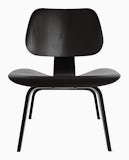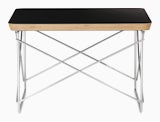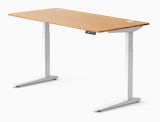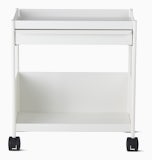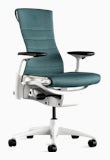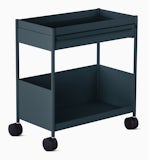How the right office chair can help alleviate neck and back pain
If you’ve had to work at home over the past few years, maybe even sitting at your kitchen table, your experience with discomfort may be especially deep. Your neck feels stiff. Your lower back aches. Your level of focus falls along with your desire to sit and work for hours at a time.
Chances are, you’re sitting in the wrong office chair.
The solution? The right chair: an ergonomic office chair designed for the human body. The best office chair for back pain is more than just an office chair with lumbar support. It’s a science-backed chair that supports all key areas of the spine (the lumbar is just one of them) and allows free, fluid movement while one is seated.
If you’re looking for the best office chair for long hours, one that can truly help you stay comfortable and productive as you work, a quick anatomy lesson might help. Or, if you want to skip right to the recommendation, take our quiz:
Office Chair Quiz
“The human spine is dynamic and requires dynamic support during seated periods. The four regions of the spine have unique attributes and requirements; a good work chair should address those unique requirements.”
– Supporting the Spine When Seated, The Science and Research Behind the Mirra 2 Chair
Keeping the Spine Aligned
A good work chair addresses the unique requirements of the four regions of the spine: the neck, trunk, lower back, and tailbone, also called the cervical, thoracic, lumbar, and sacrum regions, respectively.
Neck: The cervical spine, or neck, is the uppermost part of the spine, comprising the seven vertebrae that connect the skull to the shoulders. The neck is strong and flexible, responsible for supporting the weight of the head and allowing an incredible range of movements. Poor posture over long hours at a work desk can cause pain and stiffness in the neck, sometimes called “tech neck.” To avoid this unfortunate affliction, it is vital to choose an office chair with neck support or one that promotes healthy sitting posture.
Trunk: Connected to the rib cage and consisting of the 12 vertebrae in the middle of the spine, the thoracic region, or trunk, is mostly rigid. When properly positioned, it curves outward, forming the kyphotic curve of the spine.
Lower Back: The most famous culprit of back pain, the lumbar region, or lower back, consists of only five vertebrae. But they are the largest in the entire spinal column, and for good reason: The lower back supports the weight of the body and is highly flexible. Together with the cervical spine, the lumbar spine curves inward, forming the lordotic curve, an essential part of the spine’s S-shape that requires adaptable support. Office chairs with lumbar support often curve inward at the base of the seat back, contouring the shape of the lordotic curve.
Tailbone: The sacrum, or tailbone, is the five fused vertebrae nestled in the pelvis. When seated, the pelvis tends to angle backward, flattening or even reversing the lordotic curve, which can cause lower back pain. The best office chair for back pain keeps the pelvis stable and tilted forward in a natural position, maintaining the concave lordotic curve.
Most work chairs, don’t offer comprehensive spinal support that targets each region of the spine, often specifically neglecting support for the sacrum. Also, many foam and fabric chairs have a backrest that mimics the general contours of the human spine, but they don’t respond to a person’s unique shape or allow flexibility in movement. Many mass-market office chairs are one-size-fits-all, despite the vast diversity in shape and size of the human population.
Supporting Our Need to Move
You may think you’re just sitting and staring at a computer screen all day, but research shows that you’re moving around more than you might think. A Herman Miller study on seating behavior found that seated people move their torso an average of 53 times an hour. Nearly 28 percent of those moves involved leaning or turning (Dowell et al., 2001).
However, most work chairs are not designed to support all the micromovements you make throughout the day. They have backrests too rigid to allow the sitter’s torso to move naturally, so people tend to move away from the backrest – losing much-needed support for their back.
The Best Office Chairs for Back Pain, Backed by Science
Herman Miller offers ergonomic office chairs that provide holistic support for the four regions of the spine and have the flexibility to keep people moving throughout the day.
The Aeron Chair is considered by many sources to be the best office chair for back pain, and for good reason: It was designed that way. Before he and industrial designer Don Chadwick created the classic Aeron Chair for Herman Miller in 1994, designer Bill Stumpf spent years working with physicians to research how people sit and how to design human-centered office seating. He was not just an ergonomics expert – he was the ergonomics expert.
The Aeron Office Chair is a truly science-backed ergonomic office chair that supports all the body’s natural linkages – knees, hips, arms, shoulders, head, and cervical spine – to encourage healthful posture and natural movement. Remastered in 2016, Aeron offers smarter weight distribution through 8Z Pellicle and adjustable PostureFit SL for total spinal support. As you move from an upright to reclined position, your feet stay planted on the floor, your back remains in contact with the chair’s back, and your arms remain on the armrests. You never lose full support for your body, even as you switch postures.
The Science Behind Aeron
The Mirra 2 chair was designed to prioritize movement. This ergonomic chair’s Butterfly Back allows it to naturally mirror the leaning and turning motions you make as you sit. Supported by a Loop Spine that connects to the base and top of the backrest, Mirra 2 gives you the freedom to move, lean, and bend. The perforated material on the chair’s back also allows for a greater range of flexibility and support for each region of the spine.
The Science Behind Mirra
Named one of the 100 Best Inventions by Time magazine, the Cosm Office Chair's sophisticated design instantly responds to and supports your body, movement, and posture. There's a single lever that adjusts its height. Cosm's Auto-Harmonic Tilt, Intercept suspension, and flexible framework give you a feeling of weightlessness. A study conducted by Herman Miller in collaboration with the Texas A&M Ergonomics Center concluded that sitting in the automatically adjustable High-Back Cosm Chair demonstrably improved participants’ productivity and cognition, compared to non-adjustable and highly adjustable alternatives. In other words, Cosm lowered peoples’ stress.
The Cosm Chair Study
Designed with the input of more than 30 physicians and PHDs in biomechanics, vision, physical therapy, and ergonomics, the Embody Office Chair offers your neck and back serious support. Instead of locking you into the seat, this modern ergonomic office chair encourages effortless long-term sitting. Its signature spinal design lets you manually fine-tune the fit to your back while a matrix of pixels in the seat and back automatically conforms to your micromovements.
The Science Behind Embody
In Conclusion
With the anatomy lesson learned, the body’s full range of motion considered, and the options laid out, which chair is the best? Is the Aeron Chair the best office chair for back pain? Or is it the Embody? The truth is: The right office chair for one person won’t necessarily be the right office chair for another. As we’ve learned through research and tests, humans have an incredibly diverse range of anatomies and movements, and no single chair can support them all.
The best chair for you will cater to your specific work style and needs. Take our Office Chairs Quiz to answer some questions about your sitting habits and receive personalized recommendations for the best office chair for you.
Shop all Ergonomic Office Chairs
Sources:
- Dowell, Green, and Yuan (2001), “Office Seating Behaviors: An Investigation of Posture, Task, and Job Type,” Proceedings of the Human Factors and Ergonomics Society 45th Annual Meeting.
- https://www.hermanmiller.com/research/categories/white-papers/supporting-the-spine-when-seated/
- https://www.hermanmiller.com/research/categories/white-papers/the-kinematics-of-sitting/




